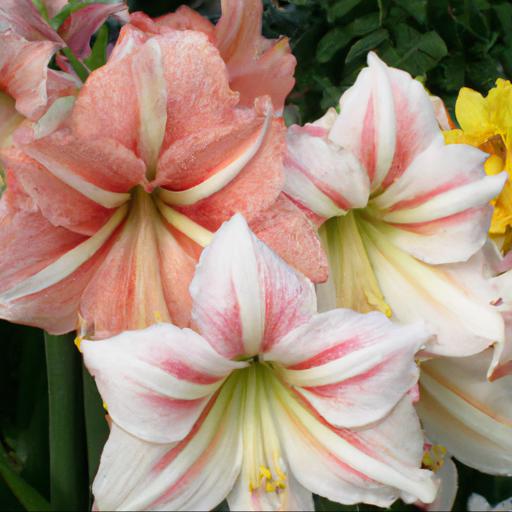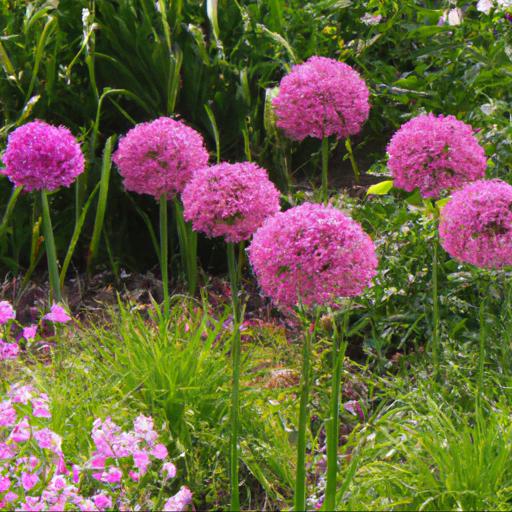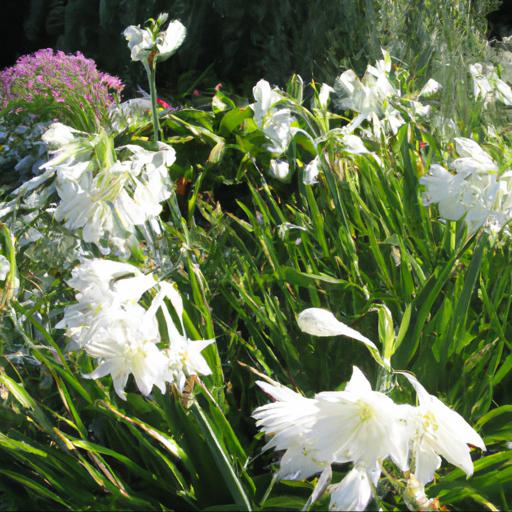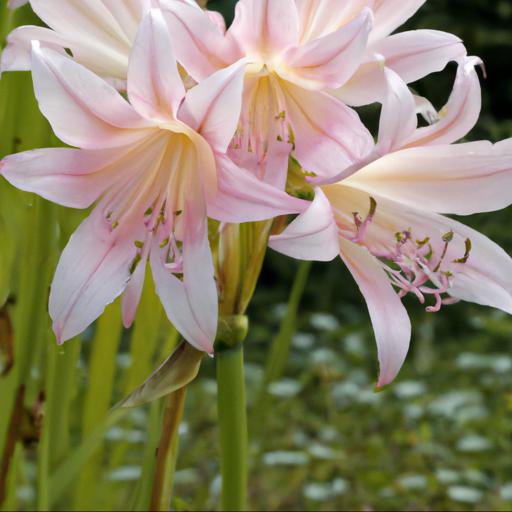Bring a touch of summer to your garden this August with summer-flowering bulbs! From bright and cheerful dahlias to fragrant lilies and majestic gladioli, there is a wide variety of eye-catching bulbs available to choose from.
Plant them in the spring and they will be ready to bloom in August, bringing a welcome splash of colour to your outdoor space. With the right care, they will continue to bloom until the first frosts of autumn. So why not add a touch of summer to your garden this August with summer-flowering bulbs?
Types of summer-flowering bulbs for august

Summer-flowering bulbs add cheer and color to any garden, particularly during the month of August. Gardeners in the UK are lucky to have a wide variety of bulbs to choose from, both perennial and annual varieties. A few of the most popular summer-flowering bulbs for August include dahlia, gladioli, crocosmia, and liatris.
Dahlias are one of the most recognizable summer-flowering bulbs, a group of perennials with a wide range of flower shapes, colors, and sizes. Considering their hardiness, dahlias can be planted in early spring and will flower right through to autumn.
Some popular varieties for August blooms include ‘ David Howard’ for its deep-red double blooms, ‘Stahl’s Flacker’ for its medium-sized pink petals, and ‘Bishop of Leicester’ for its classic purple petals. Gladioli are another popular summer-flowering bulb that thrive in the UK’s summertime climate. Gladioli usually flower in late summer, so planting them in July is advised for flowers in August.
Gladioli come in a massive variety of colors and combinations, from soothing whites and pinks, to multicolored blooms with many shades. Popular varieties to look out for in August include the rare- but elegant- ivory-white ‘Fragrant Cloud’, ‘Papaya’ with its subtle orange-yellow hue, and ‘Little Eliza’ with its delicate pastel-pink petals.
Crocosmia is a group of flowering bulbs that are popular with UK gardeners during the summertime. The strappy foliage leaves add interest throughout the year, and the flowers look like vibrantly colorful stars in mid-summer. Some popular varieties for August blooming include ‘Crimson Beauty’, with its deep red petals, and ‘Emberglow’, with its stunning raspberry-pink petals.
Liatris is another reliable summer-flowering bulb, with flower buds opening into vibrant spikes of long-lasting blooms. Liatris is available in a range of colors including white, pink and purple, with some varieties sporting multiple colors on each flower spike.
Some noteworthy varieties include ‘Kobold’ for its bright purple buds, ‘Rudy’ with its deep pink-purple petals, and ‘Kobold Classic’ for its dazzling magenta blooms. With a wide range of summer-flowering bulbs available for UK gardeners to choose from, it’s easy to create a stunning display of colorful blooms in August. Dahlia, gladioli, crocosmia, and liatris are all great options for colorful summer flowers, with each one having a range of varieties to suit all kinds of gardeners.
Benefits of planting summer-flowering bulbs for august

When the summer sun is shining, what could be better than a garden full of vibrant and colorful blooms? Summer-flowering bulbs are an easy and inexpensive way to add an abundance of bright and cheerful plants to the landscape.
These bulbs, which bloom in the late summer months like August, create a riot of color throughout the garden, adding life and visual interest to any outdoor space. Summer-flowering bulbs come in a variety of sizes, shapes, and colors, making them a great addition to any flower bed or container garden. Many popular varieties, such as lilies, dahlias, gladiolus, and cannas, fit in nicely with other flowers and plants.
For the gardener on a budget, they represent an opportunity to get colorful and unique blooms without breaking the bank. When planted correctly, summer-flowering bulbs are strong and hardy.
They tolerate heat and drought, and can create showstoppers when conditions are optimal. When properly cared for, these plants can come back year after year, rewarding the gardener with acre after acre of eye-catching blooms for very little effort or expense. Plus, summer-flowering bulbs make excellent cut flowers, so you can enjoy their beauty indoors as well.
So for anyone looking to upgrade their garden this summer, consider planting a variety of summer-flowering bulbs. With the right combination, you’ll be able to create an outdoor paradise of colorful blooms that’s sure to turn heads and attract plenty of attention.
Tips for planting and caring for summer-flowering bulbs for august

As a UK garden expert, I want to share with you some tips on how to plant and care for summer-flowering bulbs for August. Summer-flowering bulbs add a splash of colour and texture to your garden during the long days of summer, but they require some special care – and some knowledge – to grow successfully. When planting summer-flowering bulbs, it’s important to choose the right spot in your garden.
A sunny, open location with well-drained soil will give them the best chance to thrive. Avoid spots where water may collect, such as the base of a slope or near a downspout.
Once you’ve chosen a spot, dig a planting hole that’s around three times larger than the bulb and then place the bulb(s) into the hole, pointed end up. Cover the hole with soil and lightly pat down.
Next, it’s important to provide your summer-flowering bulbs with the right amount of water. Too much water can lead to root rot, so instead of giving your bulbs a large amount of water at once, water them steadily and regularly. An inch of water a week should be enough to keep your bulbs blooming healthily.
While your bulbs are growing, keep the soil surrounding them free from weeds so your plants don’t have to compete for resources. Finally, for summer-flowering bulbs that are planted in August, you’ll want to provide them with a little extra protection in the winter months. Mulch around the bulb and gently stake the plants to protect them from wind and heavy rains.
Once your bulbs have died down in spring, you can tidy up your garden but wait to dig up the bulbs until there is no more risk of frost. With some careful planting, careful watering and a little extra protection, you’ll be able to enjoy your beautiful summer-flowering bulbs for August and beyond.
Conclusion
Summer-flowering bulbs such as gladioli, dahlias, and lilies can bring a splash of colour to your garden in August. Plant bulbs in well-drained soil in a sunny spot and enjoy the blooms in a few weeks’ time.
With a little care, they will flower again next year, giving you a beautiful display in the summer months.
FAQ
What types of summer-flowering bulbs are suitable for planting in August?
Types of summer-flowering bulbs suitable for planting in August include gladiolus, dahlias, lilies, and crocosmia.
What are the best practices for planting summer-flowering bulbs in August?
The best practices for planting summer-flowering bulbs in August are to choose a sunny spot with well-drained soil, dig a hole twice as deep as the bulb is tall, and add a layer of compost to the bottom of the hole. Plant the bulb with the pointed end facing up and cover with soil. Water the bulbs thoroughly after planting and keep the soil moist until the bulbs begin to sprout.
What are the benefits of planting summer-flowering bulbs in August?
The benefits of planting summer-flowering bulbs in August are that they will have plenty of time to establish before the cold weather sets in, and they will be ready to bloom in the summer months when the weather is warmer. This can provide a burst of color to the garden that will last until the first frost.
What are the most popular summer-flowering bulbs for August?
The most popular summer-flowering bulbs for August are gladiolus, dahlias, lilies, and crocosmias.
How long do summer-flowering bulbs typically bloom in August?
Summer-flowering bulbs typically bloom for 4-6 weeks in August.
What are the best soil conditions for planting summer-flowering bulbs in August?
The best soil conditions for planting summer-flowering bulbs in August are well-drained, fertile soil with a pH of 6.5 to 7.5. The soil should be kept moist but not soggy.

